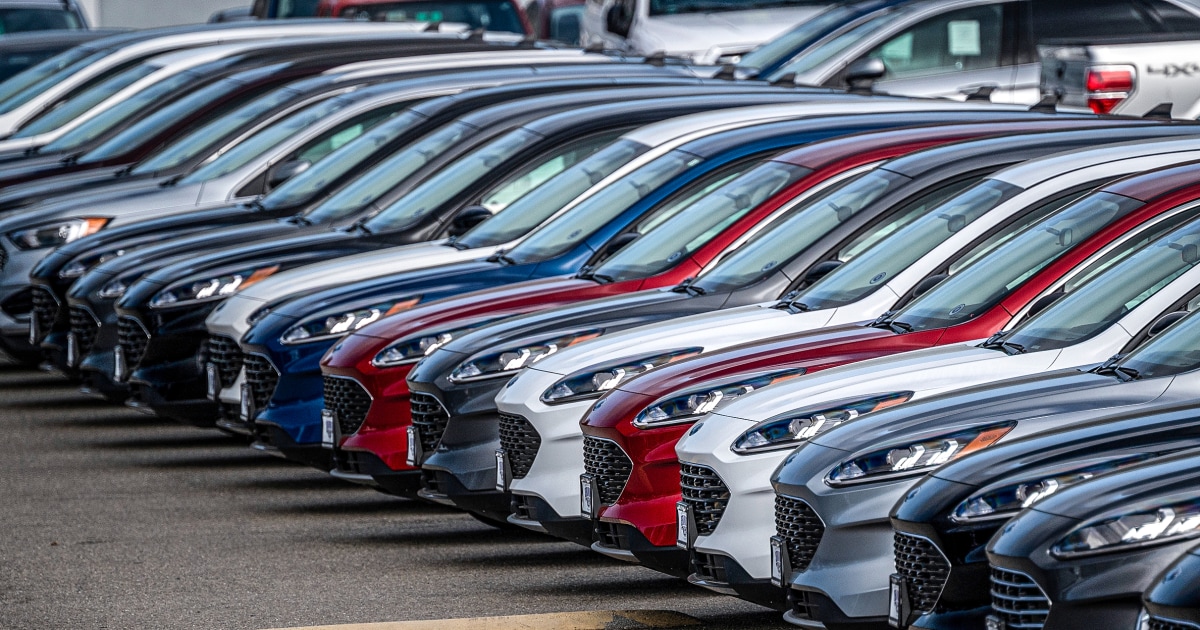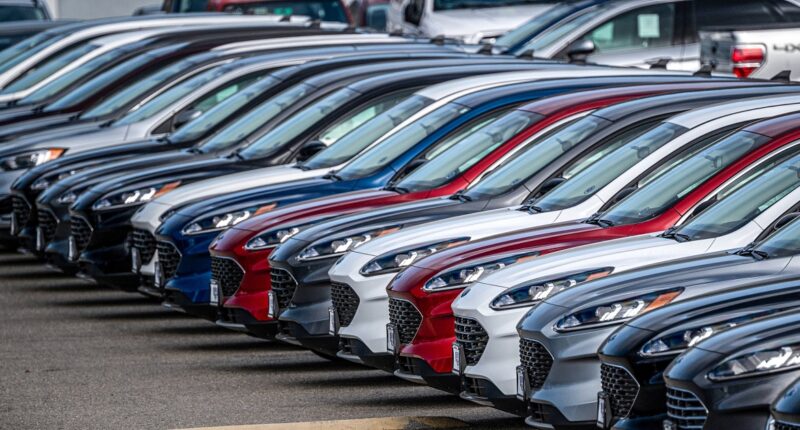
WASHINGTON — A growing cascade of financial pressures around owning a car are squeezing already strained consumers, including lenders who have limited borrowers ability to finance a car, rising insurance rates and car prices that remain well above pre-pandemic levels.
Following the recent turmoil in the banking industry, lenders have become increasingly cautious over who they will loan money to with the rejection rate for car loans rising to 9.1% in February, the highest since 2017, according to the Federal Reserve Bank of New York. For those able to get a loan, the average interest rate for a new car is up about 3 points over the past year to nearly 9%, according to data compiled by Cox Automotive shows.
The rising costs around owning a car are leading to a growing number of people falling behind on their car payments, and charities that assist people trying to buy a car say they are struggling more than ever to meet the growing demand as they face their own cost pressures. Given how crucial a car is for finding and keeping a job in most of the country, the dynamics in the car market could have even bigger implications for the economy.
“Because of the current labor market, a lot of people are able to get a job, but the number one thing standing in their way is having reliable transportation and a car to get to and from work,” said John Van Alst, director of the National Consumer Law Center’s Working Cars for Working Families project. “So that is really frustrating when we’re at a point where there are good employment opportunities.”
Iyona Anderson, a single mom in Maryland who works as a pharmacy technician, has been among those car shoppers struggling to get a vehicle. While Anderson, 27, has enough money to make the monthly payments on a $12,000 loan, she’s been unable to find a reliable car in that price range and has been repeatedly rejected for a loan because of damage she did to her credit when she was younger.
“As a younger person trying to buy a car, if you don’t have the proper knowledge about credit, it is going to get really hard, it’s going to be very difficult, especially these days,” said Anderson. “Plus, you get to the dealership and the interest rates are through the roof or your monthly payments are extremely high and even with a decent job it’s not enough to cover the car costs as well as the insurance.”
That has resulted in Anderson having to spend $300 a week on Ubers and Lyfts to get to and from her job working the overnight shift at CVS and other necessary trips, like to the grocery store. She said she has to walk her 5-year-old son to school each morning, even on days when it is cold and raining.
Anderson was recently awarded a subsidized car through the non-profit program Vehicles for Change, which repairs donated vehicles to be used by families who need them to get to work. With the time and money she plans to save by owning a car, she is hoping to start saving for a house and plans to look for a better-paying job.
But the difficult dynamics in the auto market have also spread to nonprofits trying to provide cars to people like Anderson. Martin Schwartz, president of Vehicles for Change, said his group has been getting an influx of calls from people struggling to afford a car while donations have been going down.
“There’s a lot more demand for our cars. That person who might have been able to afford their own car at $3,000 or $4,000 three years ago, now that same car is over $5,000, if you can find it. That’s well out of their ballpark,” said Schwartz. “And with credit getting tighter, even if they could have afforded it there is the question of getting a loan.”
With people able to get more money selling their old cars, the number of vehicle donations to his organization has tumbled, and the vehicles it is receiving are in worse shape, Schwartz said. As a result, the nonprofit organization has gone from providing 400 cars a year to families to around 110 last year.
Used car prices had been ticking down slightly in recent months, but jumped more than 4% in February, the biggest increase since 2009, with the average used vehicle selling for around $26,000.
While auto production has started to return to normal for many carmakers, new prices have shown little signs of returning to pre-pandemic levels with the average monthly payment on a new car at $784 — up 29% from before the pandemic.
For those who are able to afford a car and get a loan, there is also the rising cost of insurance to grapple with. Auto insurance costs increased 14% in 2022, with the average car owner paying about $2,000 a year for full coverage if they have a clean driving record, according to Bankrate.com. Insurers say they have had to raise rates because of higher repairs bills as a result of parts and labor shortages and the increased cost of replacing vehicles given the spike in used car prices over the past two years.
Lower-income households have been hit disproportionately hard by those higher insurance costs because rates are often higher for owners in urban areas and those with lower credit scores, less education or who are unmarried, said Van Alst. Drivers with excellent credit scores pay about half as much as drivers with poor credit, and in Wisconsin, for example, drivers can see their premiums go up more than $4,000 a year when their credit drops from good to poor, according to Bankrate data.
Rising interest rates are also having a disproportionate effect on those struggling the most financially. For used car buyers with subprime scores, the average interest rate is at 17%, up about 4 points over the past year, and those with below subprime credit have to pay an average rate of 22%, according to data from Dealertrack.
“You may not be able to borrow as much and what you borrow will be at a higher rate than would have been the case a couple of years ago,” said Greg McBride, chief financial analyst at Bankrate. “That’s the case for everybody, but it particularly impacts subprime borrowers.”
All these rising costs may ultimately lead to good news for car buyers, as it is expected to put pressure on automakers to lower their prices in order to offset higher interest rates, softening trade-in values and tightening credit, said Colin Langan, a senior auto analyst with Wells Fargo.
Used prices have come down from their peak and there are some signs of automakers increasing the incentives they offer as their inventory levels get back to normal, said Langan. It could be a couple years though before prices come back in line with their pre-pandemic levels.
“I think we’re going to see pricing ease soon,” said Langan. “All the signs are there that it should be rolling over with rising interest rates, payments are up a lot. That alone should put pressure on it.”
Source: | This article originally belongs to Nbcnews.com









